

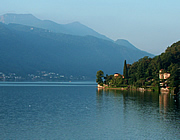
A few days spent in the extreme south-east of Switzerland in the Italian-speaking Ticino.
Marvellous medieval castles at Bellinzona, wonderful mountain scenery around Lake Lugano and an incredible Romanesque church on the return journey, capped with an exhilirating drive on the old switchback road to the St. Gotthard pass.
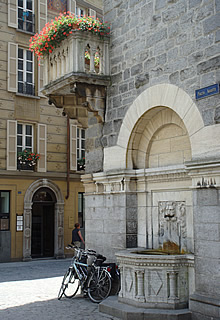
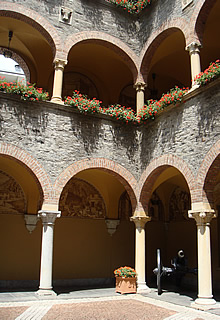
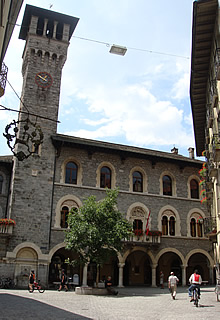
Bellinzona lies at an strategically important location guarding routes from several passes through the Alps which converge here and further lead south into Italy. The three castles thus occupy supremely advantageous positions for the protection of the region.
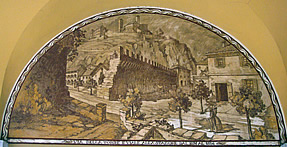
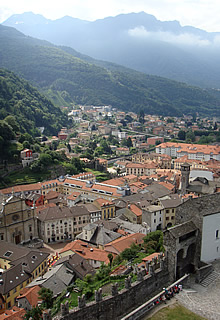
Most of what can be seen today was renovated or built by the Dukes of Milan in the fifteenth century in recognition of the threat from the Swiss confederation. This was eventually to no avail, however, as in 1500 the three cantons of Uri, Schwyz and Nidwalden joined forces to take the town. It now lies in the canton of Ticino.
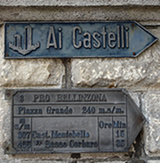
We found, however, that apart from the castles, the town itself is also very pleasant, with many good restaurants to choose form. We had excellent pizza on the shady terrace of Giardino's and by very good chocolate ice-cream before we left in the Piazza Collegiata.
We visited Castelgrande before lunch, it being easily reachable on foot from the town, and the other two castles by car.
All of the castles are built from the local grey stone and are in a very good state of preservation.
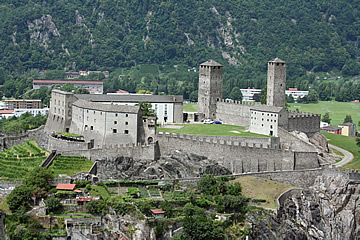
Castelgrande is the most extensive and oldest of the three castles, having been built in the sixth century on the site of a prehistoric settlement on a rocky hill.
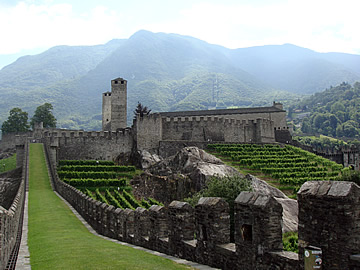
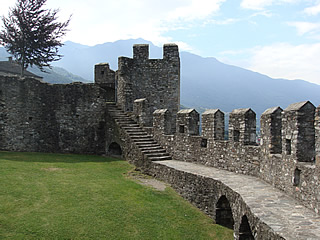
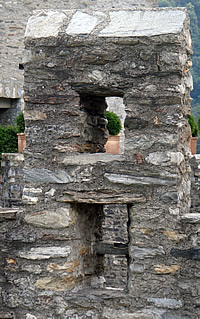
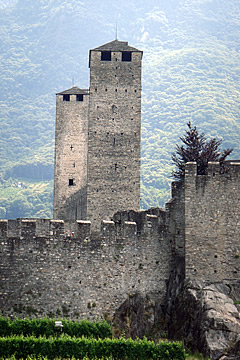
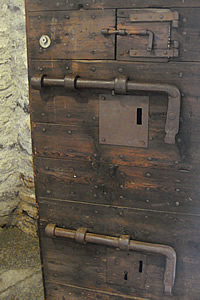
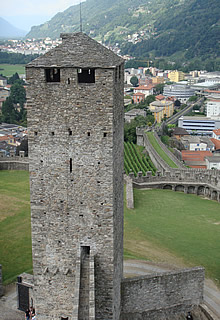
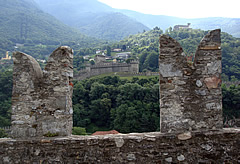
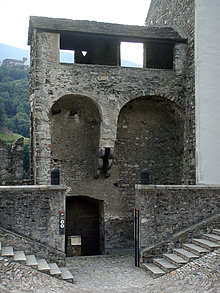
Castelgrande sits on its rock which rises abruptly from the flat valley floor. It is very visible when entering the valley from the north.
We had seen the castles several times when driving south into Italy and they look so imposing we'd always been determined to visit one day. These are definitely a worthwhile stop if you enjoy imagining the way of life of a byegone time - it's very easy here to see why the castles were built and what their roles were.
The castle has fine wide battlemented walls. Extensive stretches of the medieval town walls also remain.
The castle also has two distinctive towers: Torre Bianca and Torre Nera - the white and black towers.

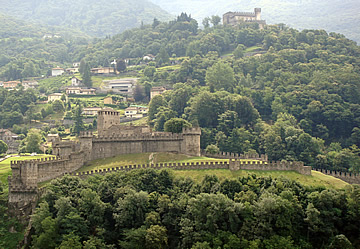
Castello di Montebello lies above the town and is a good deal smaller than Castlegrande. It was completely restored in 1903, with intact walls and rather fine drawbridges.
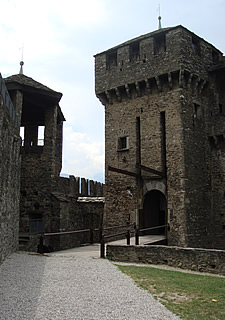
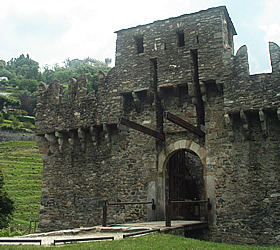

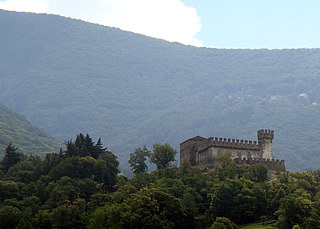
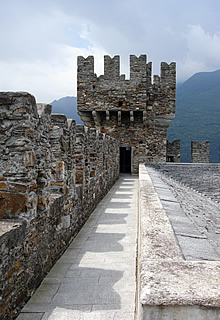
This, the smallest of the three castles, is also the highest and is primarily a look-out post.
As you might expect, the views from the walls are really superb.
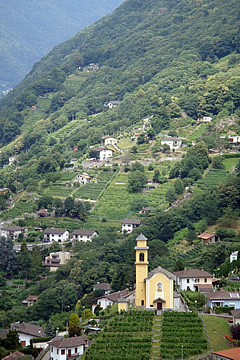
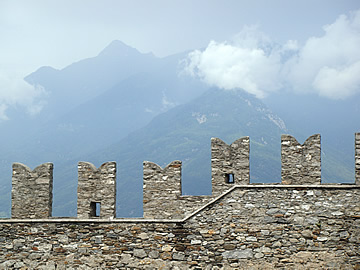
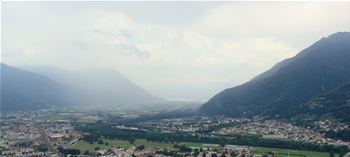
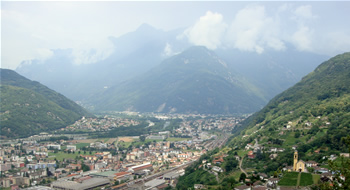
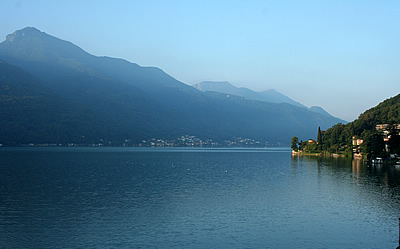
We stayed in a lakefront hotel in the village of Melide 6km south of Lugano, half way down the western shore of the lake. The Hotel Dellago is practically in the lake, it is so close! The outdoor bar is mostly built on decking over the surface of the water and is uncovered - apart from sunshades. It doesn't open during the day but is a lovely place to have a pre-dinner or post-dinner drink, especially lounging on one of the "beds" right on the edge of the deck, the whole area softly lit.
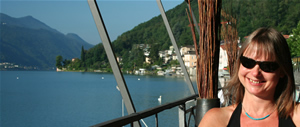
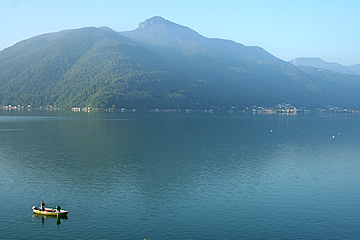
The rooms are all individually decorated - we had "chilli & peppers" with lovely views south down the length of Lake Lugano. The hotel restaurant is excellent and we had several very good meals there. Of particular note were the Thai ostrich, the spaghetti beef and the kingfish. Eating dinner on the terrace overlooking the lake is fabulous - breakfast too.
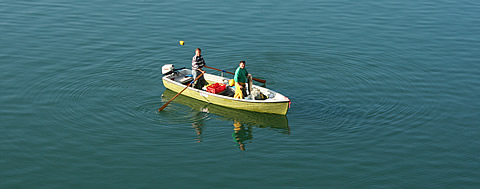
The Dellago has a good location for seeing the surrounding area as it is only a short walk from the train station - we didn't use the car at all after we arrived.
When I took the early morning video (left) I was on the roof terrace of the hotel - apart from the air vent that you can hear it was wonderfully peaceful.
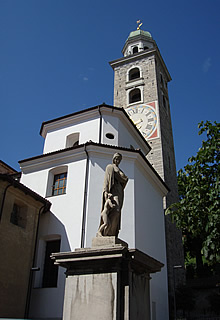
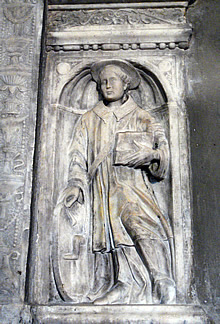
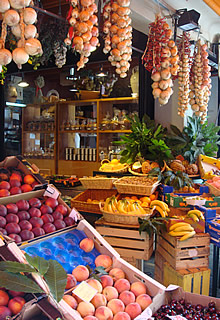
Lugano itself is located on the north west angle of the lake. Arriving at the station we walked down through the winding streets of the old town past the Cattedrale di San Lorenzo to the lake shore.
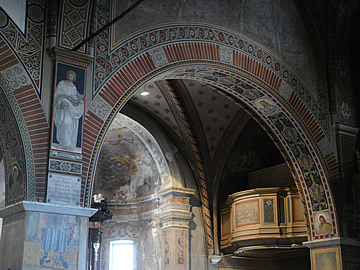
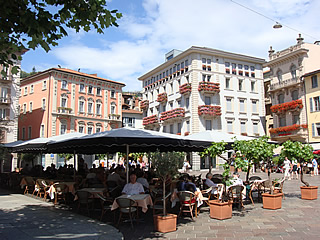
We had read about Villa Favorita, located nearby at Castagnola, which seemed to have an incredible art collection: Ucello, Raphaello, Caravaggio, Holbein, Dürer and many, many more. This was in rather an old Michelin guide and I hadn't been able to find anything else about it in newer guides or on the web.
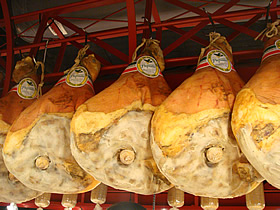
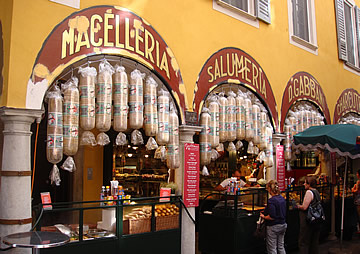
Enquiring at the Tourist Information office we were told that the collection had belonged to Baron Thyssen Bornemisza. Concerned to keep the vast collection intact after his death, he searched for a suitable location outside Switzerland when the Swiss authorities offered less than he wanted to fund an enlargement to his museum. Eventually he decided on the Villahermosa Palace close to the Prado in Madrid. The building was refurbished to become the Thyssen-Bornemizsa Museum.
So we weren't too disappointed as we'd probably seen some of these paintings already, though the lady in the tourist office was obviously quite sad that the collection was no longer nearby.
Lugano is very nice to stroll around and has many places to eat - we chose Soave10. Andrew had an excellent Pizza del Goloso and I a large caprese.
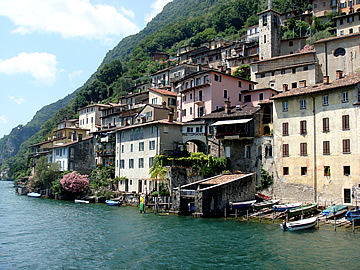
After lunch we took the boat to Gandria, a very pleasant half hour on the lake, then walked back, which took a rather longer 90 minutes.
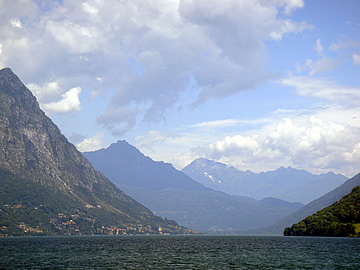
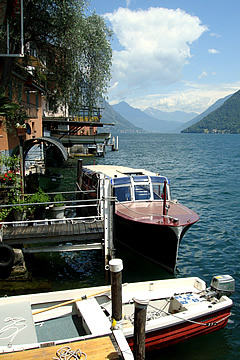
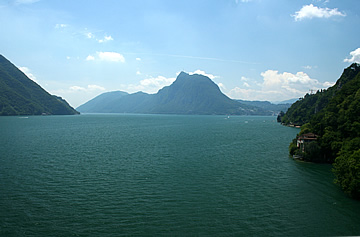
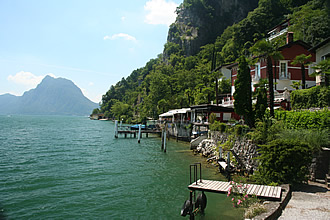
Gandria is a lovely small village, clinging to the edge of the lake practically at the Italian border.
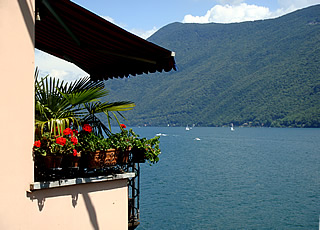
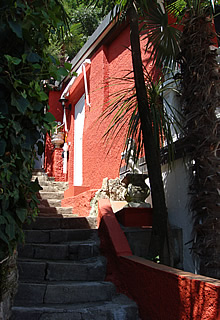
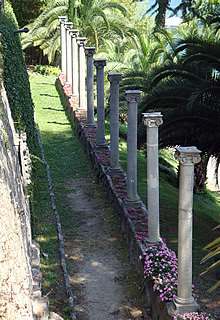
The day we did this walk it was a hot and sunny Saturday and there were lots of small boats of all kinds out on the lake: motor boats, yachts, little dinghies, to much larger luxurious-looking cruisers.
The walk to the outskirts of Lugano is easy and very picturesque, along the shore of the lake.
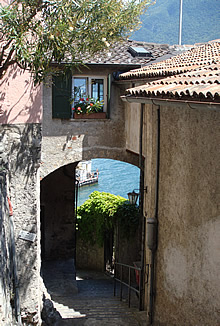
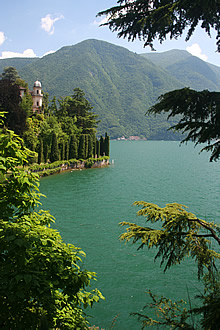
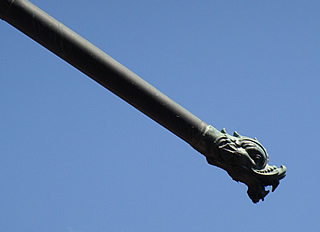
The route passes Villa Heleneum in Castagnola - the Museum of Non-European Cultures. In Lugano, the final part of the walk is along quite a busy road until you can dive into the park to regain the lake shore. Fortunately there's a funicular to the railway station saving us a final climb!
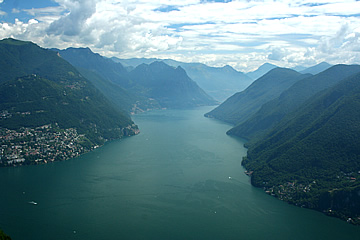
We decided to go to the top of Monte San Salvatore via train to Paradiso then the funicular and walk back down to Melide. The peak of the mountain is 912m and the views across the lake are fantastic. We had a very acceptable lasagna at the cafe at the top then started the walk down.
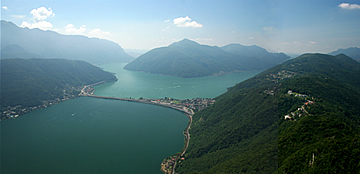
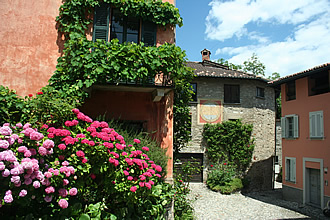
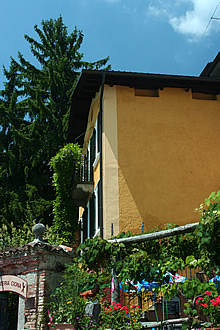
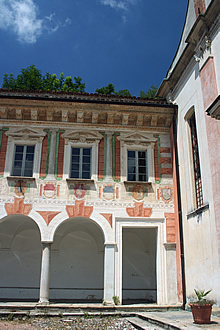
The first part of the walk is through forest so although cool there are no views to speak of. The path is clear but very steep in places and as it is covered in loose stone can be a bit hazardous underfoot.
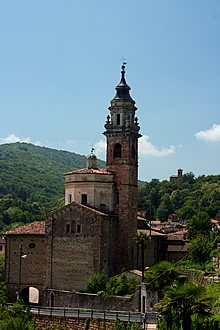
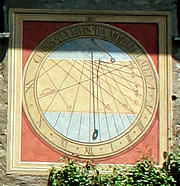
The route passes through two villages: Ciona and Carona with its lovely parish church of S. Giorgio. Here the landscape opens up a bit with good views of the lake.
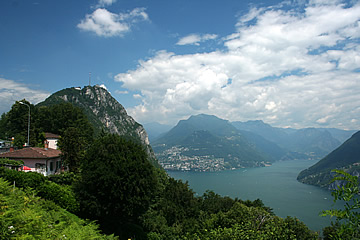
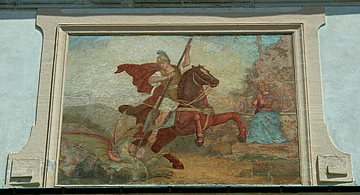
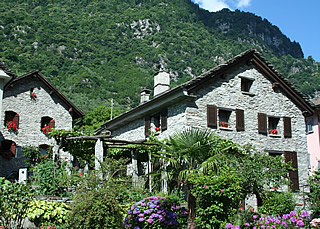
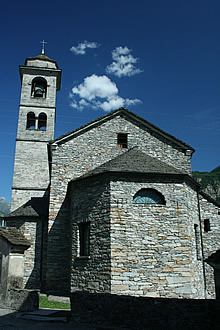
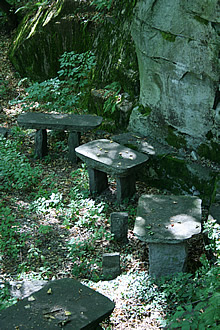
The road back home inevitably leads north past Bellinzona and its guardian castles and via one of the many passes through the Alps. We chose the San Gotthard Pass with two stops at mountain villages on the way - Personico and Giornico.
Personico is a very small grey stone village - everything that can be in this area is made from the local grey granite, the houses brightened by window boxes filled with red geraniums.
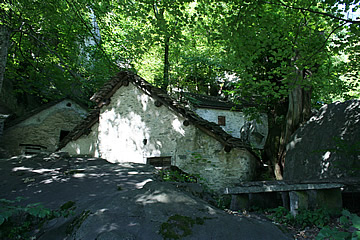
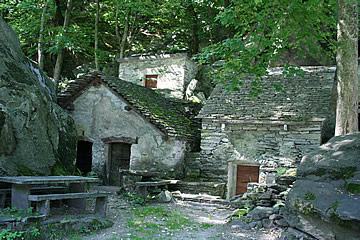
Personico is most noted, however, for one of the best examples of the traditional Ticino Grotti in the area. These are simple small stone buildings hard up against the rock face. The grotto in Personico is over a century old and beside the rocky cluster of cells with granite tables and benches is a large restaurant with its own versions outside for customers.
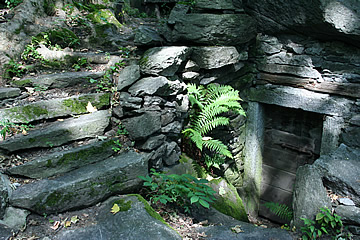
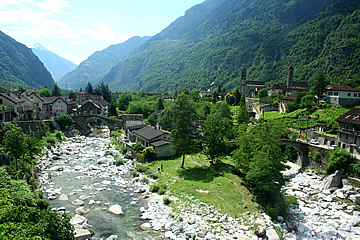
Giornico was a wonderful surprise. We had read about it and its Romanesque churches, but were unprepared for the sheer beauty of its location on the right bank of the Ticino (the river from which the canton takes its name) and the village itself.
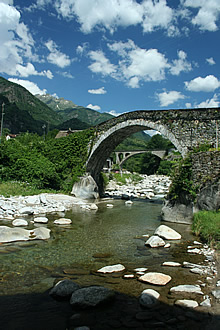
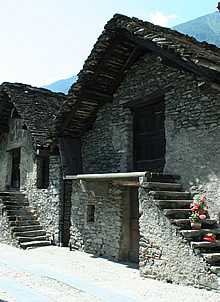
As well as the churches, San Nicolao being absolutely stunning, it has two Romanesque bridges and a small ruined castle above the village. The village seems to tumble down the mountainside along the mountain streams.
Walking by the river and into the lower village from the parking near the main road, you first see old stone buildings, some with frescoes - one the story of wine from the grape to the glass! Then on the left is the old Casa Stanga which has been turned into a museum of Levantina (this area of the Ticino) life. It was originally a hostel - the coats of arms on the walls are those of travellers who stayed here in the late sixteenth century.
As in Personico, the local granite is extensively used, including as supports in the vineyards.
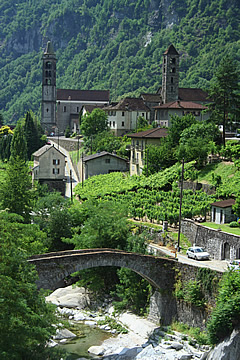
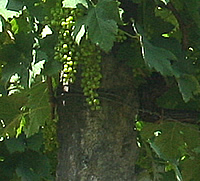
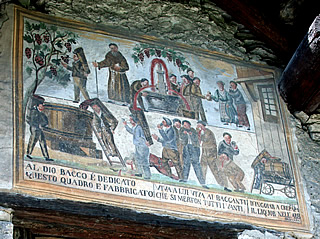
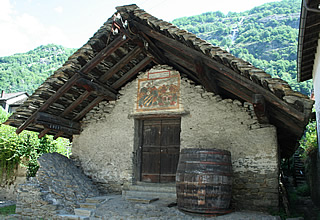
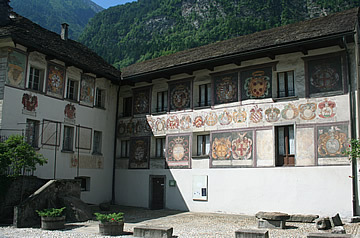
Crossing the road bridge above the town you see the small Romanesque church of Santa Maria di Castello by the ruined castle.The Milanese castle was destroyed in 1518 - Giornico is famous for the victory of the Swiss Confederation against the Milanese in 1478. It is a romantically picturesque spot, the church within the ruin on a hilltop, high above the village.
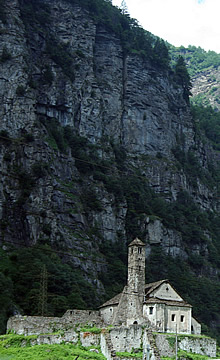
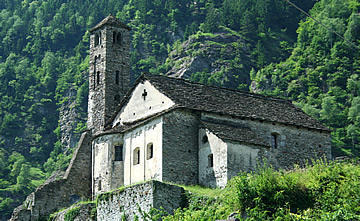
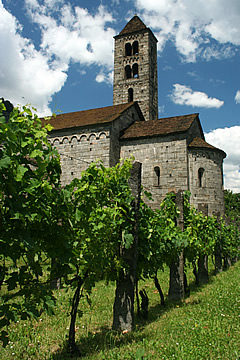
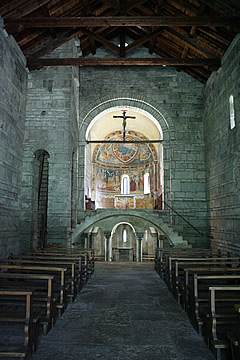
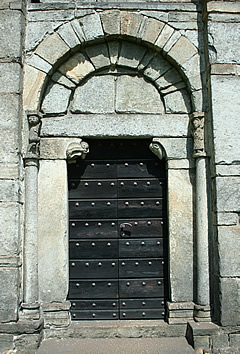
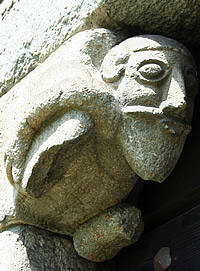
Then waiting below in the village is the most incredible Romanesque church - it is the best in the Ticino and one of the best I have seen anywhere. The parish church of San Michele nearby suffers in comparison - originally Romanesque it was altered in the 17th and 18th centuries and the bell tower was added in 1861.
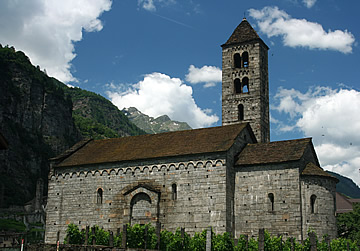
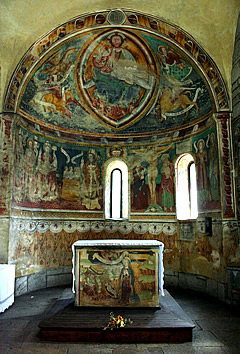
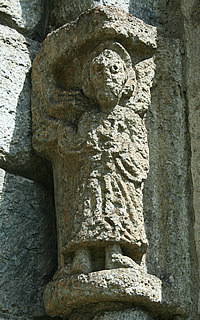
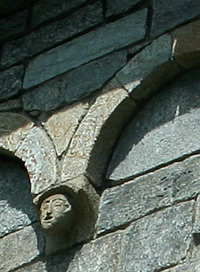
San Nicolao was built in the first half of the twelfth century, governed by a Benedictine monastery. Its exterior is typically simple with rounded Lombardy arches - a series of small arches under the eaves, the south and west doors both decorated with rustic sculpture - the columns of the west door resting on carved animals, a typical Lombardy style. Some of the small carved heads on the Lombardy arches remain. But it is the interior which is absolutely stunning.
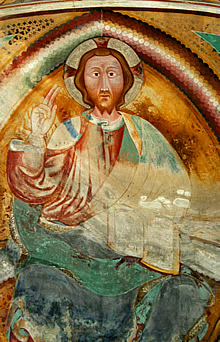
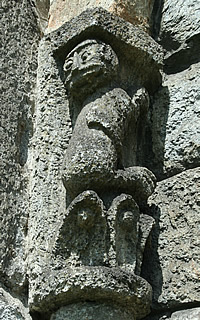

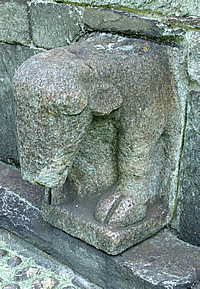
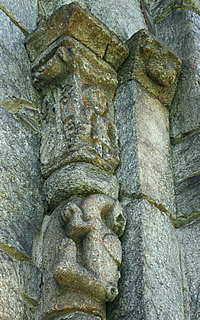
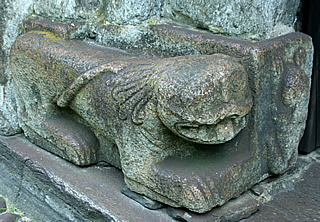
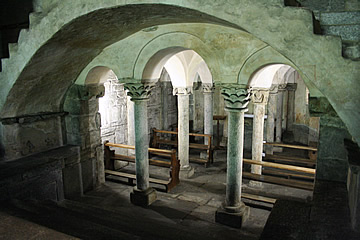
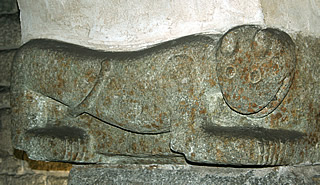
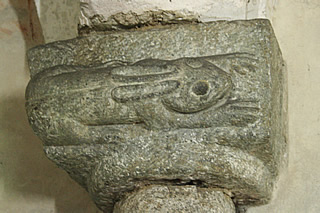
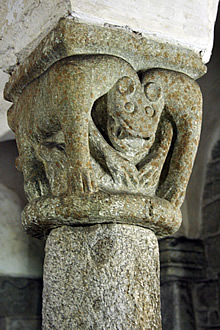
It has the typical semi-circular apse of Romanesque churches but inside the chancel is on two levels: an open triple-aisled colonnaded crypt below a platform where relics of the saint would have been kept. In this way the congregation are literally under the protection of the patron saint of the sanctuary. Apparently this is a very rare "confessional" arrangement dating from the origins of the church - I have certainly never seen another like this. The wall paintings in the apse are 1478 by Nicolao da Seregno.
The carved capitals on the columns in the crypt are wonderful: animals and geometric designs.
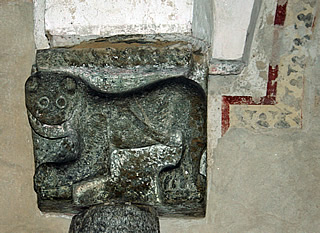
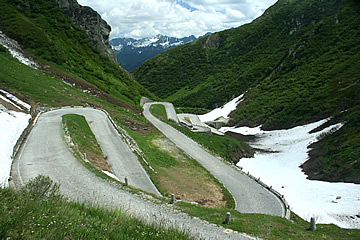
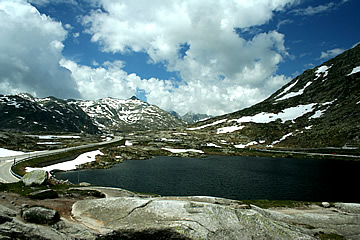
We wanted to drive the oldest of the roads upto the pass, avoiding the motorway and tunnel, because it looked very intestinal on the map!
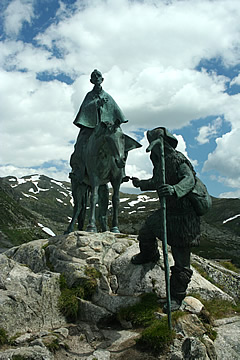
We weren't disappointed - a great road to drive and still very well maintained (this is Switzerland, after all).
The pass lies at 2108m and gets its name from a chapel erected here around 1300 in honour of St Gotthard, Bishop of Hildesheim.
The statue at the top is of the Russian General Suvorov. The Swiss had been caught up in the Napoleonic wars and Suvarov crossed the Alps here in 1799 with his troops in an unsuccessful attempt to drive out the French.